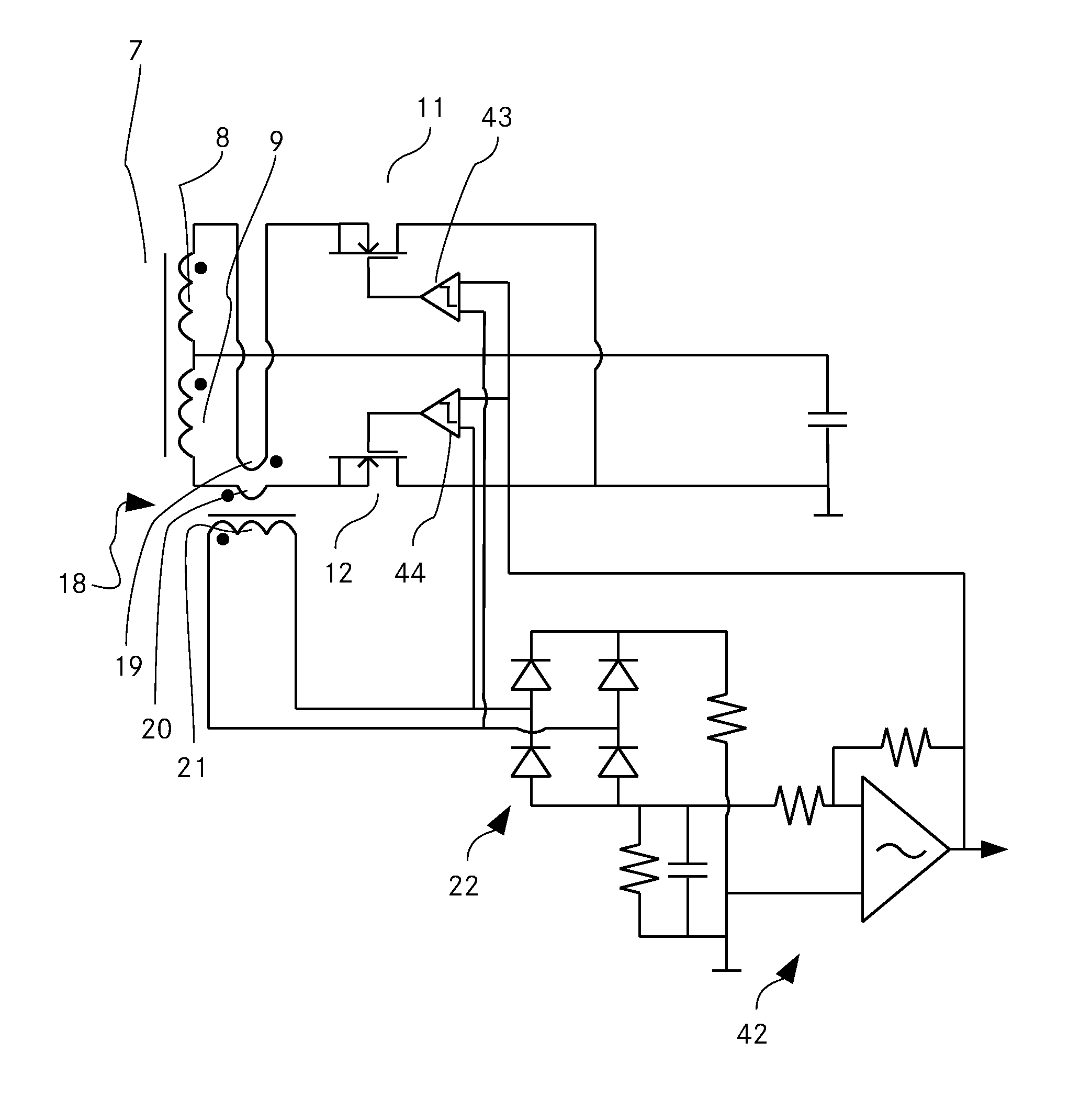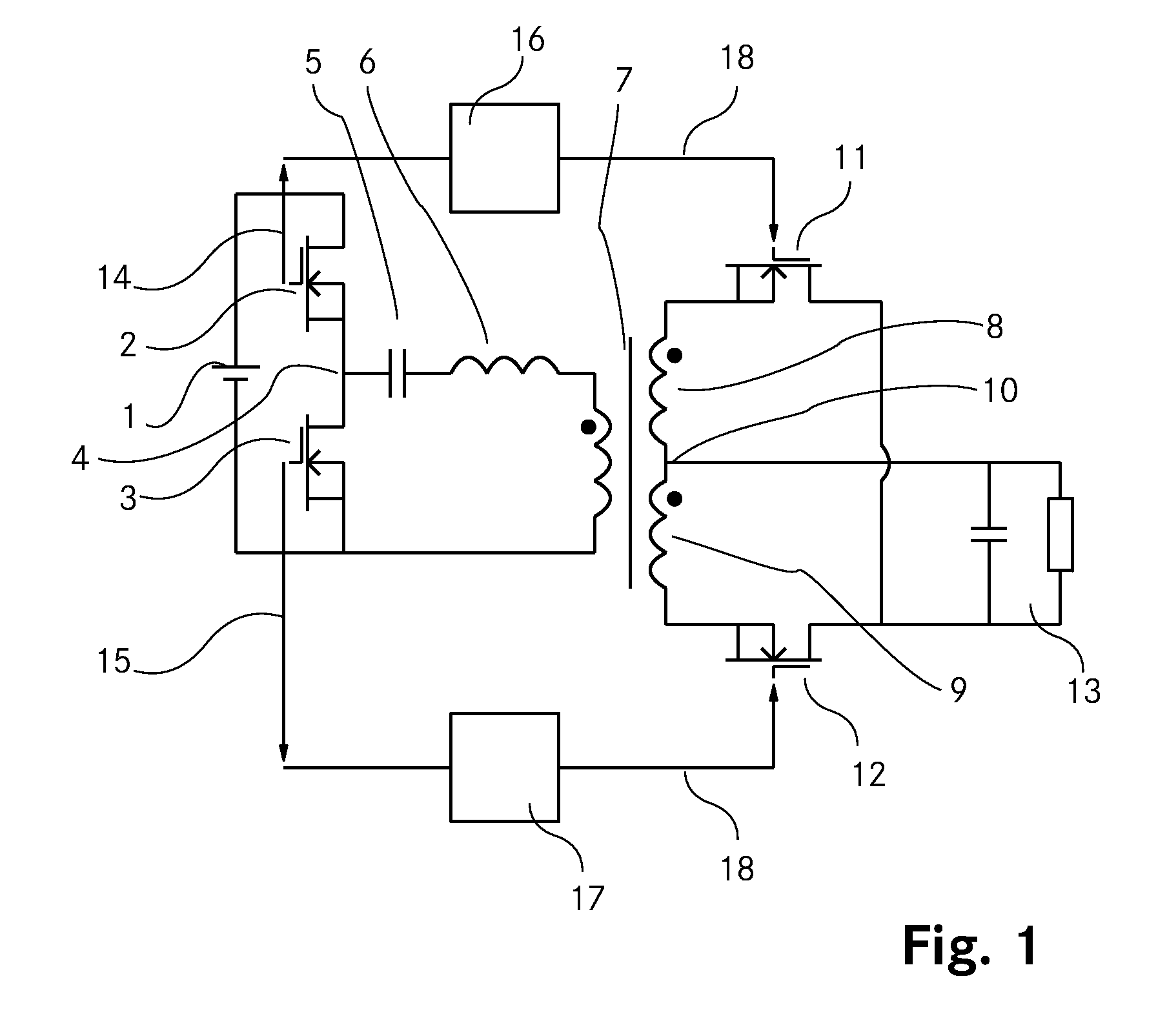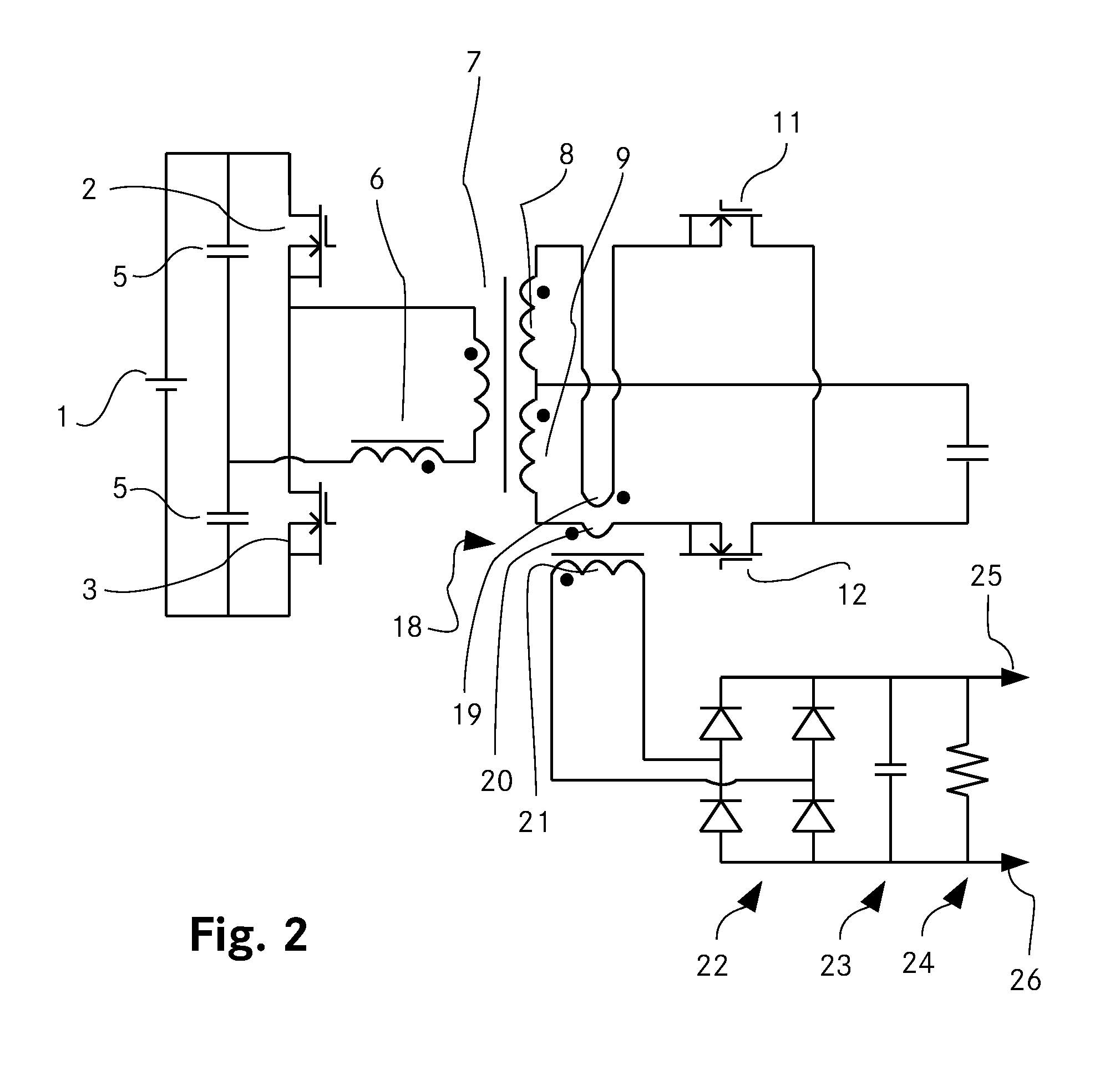Multiple use of a current transformer
a current transformer and multi-use technology, applied in the direction of ac-dc conversion, ac-electronic conversion, electrical apparatus, etc., can solve the problems of large space, additional losses, and the current transformer for measuring the winding current of the power converter needs significant spa
- Summary
- Abstract
- Description
- Claims
- Application Information
AI Technical Summary
Benefits of technology
Problems solved by technology
Method used
Image
Examples
Embodiment Construction
[0035]FIG. 1 shows a resonant converter according to the state of the art. A DC power source 1 (DC: direct current) is connected to a first switch 2 and a second switch 3, which are serially connected through primary tap 4. The first switch 2 and the second switch 3 are alternately opened and closed, whereby at primary tap 4 an oscillating voltage is generated. Primary tap 4 is connected through a capacitor 5 and an inductor 6 to the primary winding of converter transformer 7, which is also connected to one end of the DC power source 1. On the secondary side of converter transformer 7, a first secondary winding 8 and a second secondary winding 9 are serially connected through secondary tap 10. A first synchronous rectifier 11 is connected to the first secondary winding 8 and a second synchronous rectifier 12 is connected to the second secondary winding 9. The secondary tap 10 is connected to one end of load 13, whereas the other end of load 13 is connected to the first synchronous r...
PUM
 Login to View More
Login to View More Abstract
Description
Claims
Application Information
 Login to View More
Login to View More - R&D
- Intellectual Property
- Life Sciences
- Materials
- Tech Scout
- Unparalleled Data Quality
- Higher Quality Content
- 60% Fewer Hallucinations
Browse by: Latest US Patents, China's latest patents, Technical Efficacy Thesaurus, Application Domain, Technology Topic, Popular Technical Reports.
© 2025 PatSnap. All rights reserved.Legal|Privacy policy|Modern Slavery Act Transparency Statement|Sitemap|About US| Contact US: help@patsnap.com



